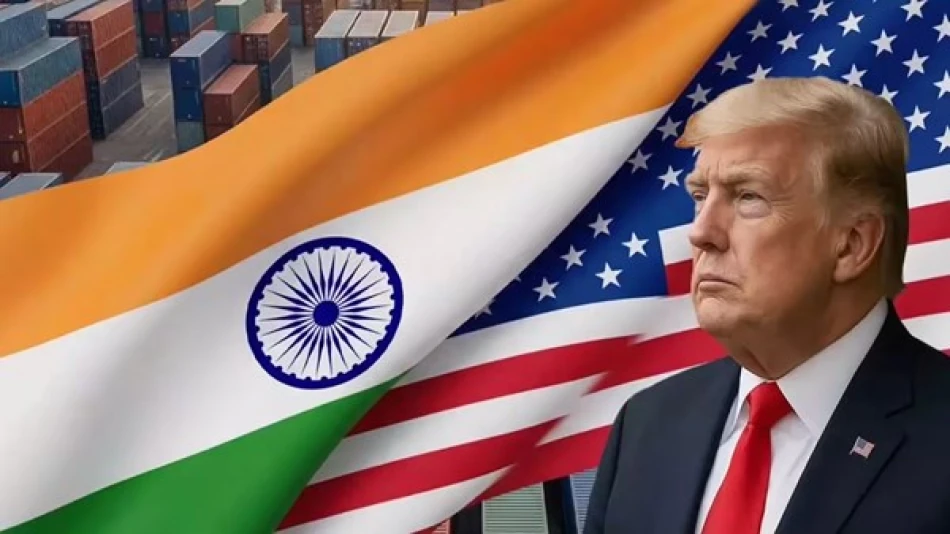
Trump Imposes Additional Tariffs on India, Escalating Trade Tensions
Trump Escalates Trade War with India: New 25% Tariffs Push Some Goods to 50% Total Duties
President Donald Trump signed an executive order Wednesday imposing an additional 25% tariff on Indian imports, bringing total duties on certain Indian goods to a punitive 50%. The move marks a significant escalation in U.S.-India trade tensions and threatens to disrupt one of the world's most important bilateral economic relationships, potentially affecting everything from pharmaceutical supplies to technology services that American consumers rely on daily.
India Fires Back: "Unfair and Unjustified" Response Expected
The Indian government wasted no time condemning the American action, labeling the tariffs as "unfair and unjustified." New Delhi pledged to take "all necessary measures" to protect its national interests, signaling that retaliatory measures against U.S. exports are likely imminent.
This rhetoric mirrors India's response to previous trade disputes, where the country has historically matched American tariffs with its own duties on U.S. agricultural products, technology goods, and motorcycles—sectors that employ significant numbers of American workers.
Economic Impact: Beyond the Numbers
What's at Stake for American Consumers
The 50% combined tariff rate on select Indian goods will likely translate into higher prices for American consumers, particularly in sectors where India holds significant market share. Indian pharmaceuticals, which supply nearly 40% of generic drugs in the U.S. market, could see substantial price increases if included in the tariff scope.
India's Strategic Response Options
India's government has several retaliatory tools at its disposal. The country could target American agricultural exports—a sector that has historically been vulnerable to trade disputes—or impose restrictions on U.S. technology companies that have invested heavily in India's growing digital economy.
Historical Context: A Pattern of Escalation
This latest move continues a pattern of trade tensions that began during Trump's previous presidency, when the U.S. removed India from its Generalized System of Preferences program in 2019. Unlike the more predictable trade relationships with allies like the UAE or Singapore, U.S.-India commercial ties have been marked by periodic flare-ups over intellectual property, market access, and trade imbalances.
The timing is particularly significant given India's emergence as a critical partner in U.S. efforts to diversify supply chains away from China. This tariff escalation could undermine that strategic objective, potentially pushing India closer to alternative trading partnerships.
Market Implications: Winners and Losers
Investors should watch for immediate impacts on Indian export-dependent companies, particularly in textiles, pharmaceuticals, and information technology services. Conversely, domestic U.S. producers in affected sectors may see short-term benefits, though higher input costs could offset these gains.
The broader concern for markets is the precedent this sets for other bilateral relationships. If the U.S. is willing to impose such steep tariffs on a strategic partner like India, other trading relationships may face similar pressures, creating uncertainty for global supply chains and multinational corporations.
Looking Ahead: Diplomatic Resolution or Prolonged Standoff?
Unlike previous trade disputes that often involved months of negotiation, this executive order's immediate implementation suggests the Trump administration is prioritizing swift action over diplomatic solutions. India's measured but firm response indicates New Delhi is prepared for a prolonged standoff rather than quick capitulation.
The resolution of this dispute will likely depend on whether both sides can identify face-saving compromises that address American concerns about trade imbalances while preserving India's access to U.S. markets. The stakes extend far beyond trade statistics—they encompass the future of Indo-Pacific strategic cooperation and global supply chain stability.
Most Viewed News

 Layla Al Mansoori
Layla Al Mansoori






